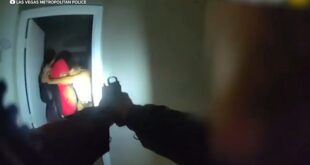The Department of Homeland Security has started a program that will test the accuracy of various off-the-shelf facial recognition platforms.
Government Technology
November 8, 2013

Facial recognition has come a long way in the last few years, with personal handheld digital cameras now offering basic biometric applications. But on a grander scale, the U.S. Department of Homeland Security (DHS) has embarked on a program to better understand facial recognition and how it can be used by all levels of government and first responders.
The DHS is in the midst of a project where video footage taken of people moving throughout the Toyota Center in Kennewick, Wash., will be combined with mock profiles of volunteers. Then various commercial off-the-shelf facial recognition products will be tested to see how accurate they are.
The data being collected consists of video taken during home games of the Tri-City Americans of the Western Hockey League. The Pacific Northwest National Laboratory (PNNL) is handling video collection. Results from the facial recognition assessment will be made available to the government.
“What we’d like to see is how well the current facial recognition systems perform,” said Patricia Wolfhope, program manager in DHS’ Science & Technology Directorate. “The only way to do that is to compare the data we are going to get from this data collection with the facial recognition algorithms.”
Wolfhope added that the assessment was about understanding the overall state of the technology and not necessarily designed to target use in a specific setting or with a specific application in mind.
The directorate is responsible for all of the research, development, testing and evaluation of technologies and standards and other solutions to meet the challenges faced by the operational components of DHS and the law enforcement, emergency management and the first responder communities.
The DHS research arm works with emergency response agencies to find out what they need to make their jobs better, safer, faster and more efficient and then reaches out to universities, laboratories and the private sector to find out who has solutions. Sometimes it can tweak applications available to meet the needs or, if necessary, it can build solutions from scratch.
 Daily Stormer The Most Censored Publication in History
Daily Stormer The Most Censored Publication in History


